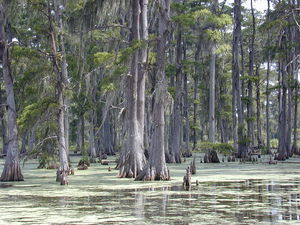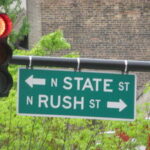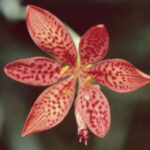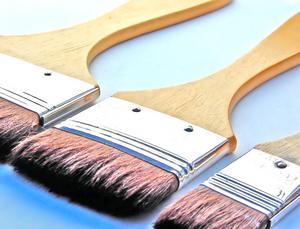The state tree of Louisiana is the Bald Cypress (Taxodium distichum). This tree is also known as cypress, white cypress, Gulf cypress, southern cypress, red cypress, swamp cypress, and yellow cypress. The bald cypress is a close relative of the pond cypress which tends to be found growing in ponds and wet areas in southeastern Louisiana and southeastern Virginia to southern Florida. The bald cypress will grow in areas along the East, South, and West coasts, as well as inland, except for the northern plains states. The bald cypress is hardy in Zones 3 to 9.
The bald cypress is a North American native conifer. Trees has reach a height of 150 feet and live for a thousand years. The root system includes both lateral roots and a tap root. The trunk grows from a lateral root which explains the knee structure that is common on bald cypress trees growing in swamps. The cypress is monoecious having both male and female flowers on the same tree. There are small (1 inch) cones that appear in the upper canopy. The trees are also known for the curtains of Spanish moss hanging from branches.
The bald cypress leaves resemble needles and are a soft green color that turns a cinnamon color in the fall. The bald cypress is deciduous. The trees are known best for growing in swamps, but they also grow in well drained soils where they usually do not form knees.
The bald cypress prefers full sun and is a good choice to plant in commercial landscapes such as parking lots. They offer shade, as well as wind and sight screening. The bald cypress is a good street tree if the extension by the road is wide enough to accommodate its mature trunk size. The trees have tolerated urban air pollution, poor drainage, and heavily compacted soil. The tree shape is pyramidal when the tree is young. Older trees can droop from the expanse and weight of the canopy and some pruning will be necessary if the tree is planted near streets, sidewalks, or paths. Closely planted trees can be pruned into a hedge.
The bald cypress grows in the wild on the Gulf Coast Plain into southeastern Texas. It is also found growing near creeks and streams of the Southeastern States, Mississippi, Oklahoma, Missouri, Illinois, and Indiana. The trees are highly valued commercially. Because the heart wood resists decay, cypress is popular for construction, fence posts, boats, doors, blinds, flooring, shingles, and in fine cabinetry. The other wood and bark are processed and sold as a slowly decomposing, orange-colored mulch.
Bald cypress grows well in swampy areas. Seeds from the bald cypress are a food source for wild turkey, wood ducks, evening grosbeak, and squirrels. Bald eagles and osprey nest in the tree tops. Song birds nest in decaying areas. In the muck and soggy marsh at the base of the trees, there are catfish, herons, and egrets. From a distance, the stand of cypress inhabiting a swamp takes on a dome shape. The swamp forest is referred to as a cypress dome. These domes are home to frogs, toads and salamanders.
Cypress domes can help to naturally clean waste water. They are able to clean sewage contaminants from the water before it sinks to the water table beneath the swamp.
The bald cypress has few serious predators. The nutria, a rodent common in swamps, feeds on cypress seedlings. Trees can be attacked by fungi, twig blight, bagworms, forest tent caterpillar, and fruit-tree leafroller.
Sources
Taxodium distichum, US Forest Service, http://www.fs.fed.us/database/feis/plants/tree/taxdis/all.html
Taxodium distichum, University of Florida, http://hort.ufl.edu/trees/TAXDISA.pdf
Taxodium distichum, Ohio State University, http://www.hcs.ohio-state.edu/pocketgardener/sourcetext/description/ta_ichum.html






